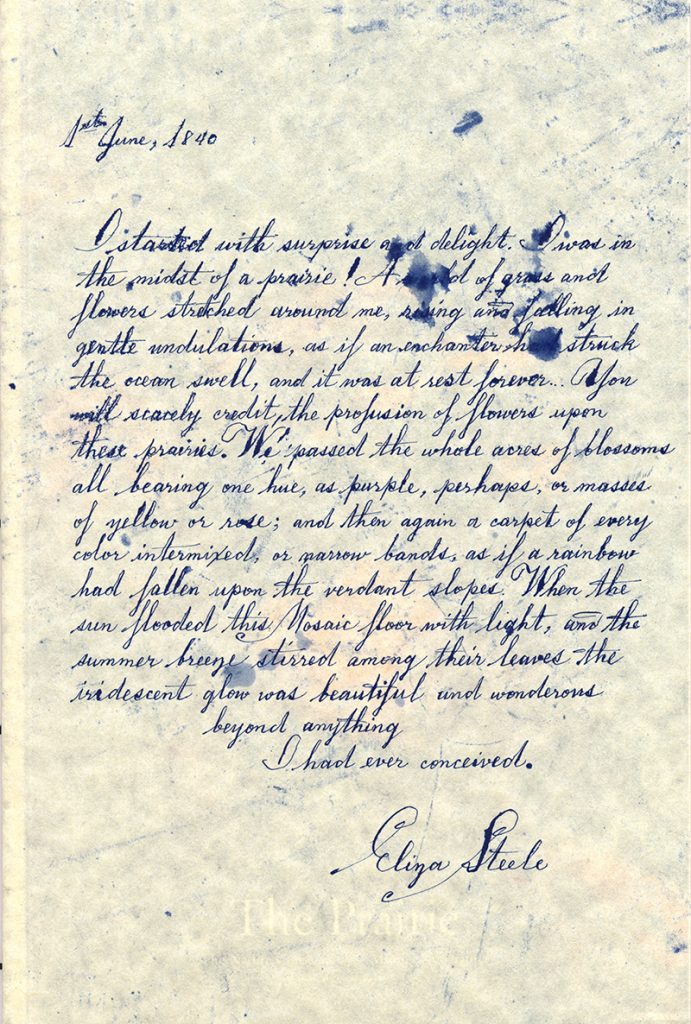Page 29: The pioneer journal of Eliza Steele
As part of the ongoing collection of images showing moments or items mentioned in the book, Marcel’s Letters: A Font and the Search for One Man’s Fate, here is the faux journal mentioned on page 29.
“One of my favorite projects from those years was the design of an annual report for an environmental organization preserving vast swaths of Northern Tallgrass Prairie. Spectacular photos of bushy magenta wildflowers, wild grasses bending in the breeze, and yellow coneflowers reaching skyward accompanied pages of carefully set type.
To help tell the story of what the prairie looked like one hundred and fifty years earlier, the annual report’s cover featured a journal entry from June 1840, written by a pioneer named Eliza Steele. ‘We passed whole acres of blossoms all bearing one hue, as purple, perhaps, or masses of yellow or rose; or narrow bands, as if a rainbow had fallen upon the verdant slopes. When the sun flooded this Mosaic floor with light and the summer breeze stirred among their leaves, the iridescent glow was beautiful and wondrous beyond anything I have ever conceived.’ Eliza’s journal had been written with indigo ink on mottled, off-white parchment paper. A flourished signature decorated the bottom of the page, and splotches and stains seemed to prove the rugged conditions of her cross-continental journey.
The scratchy old handwriting, lyrical words, and expressive longhand seemed to throw open a window to Eliza’s soul, and it brought her to life to such a degree people were thoroughly convinced she had been a real pioneer writing by lantern-light in the back of a covered wagon. But she wasn’t. Tim and I conjured Eliza from our imaginations. Her name had been invented. Her words had been carefully copy-written. And the lettering had been completed by a man in Florida named Jack.”
What do you think about this image? Did it match the image you had in your head as you read the book? Would you have believed Eliza had been a real pioneer?
Design: Eaton & Associates Design Co., Minneapolis
Lettering: Jack Molloy

